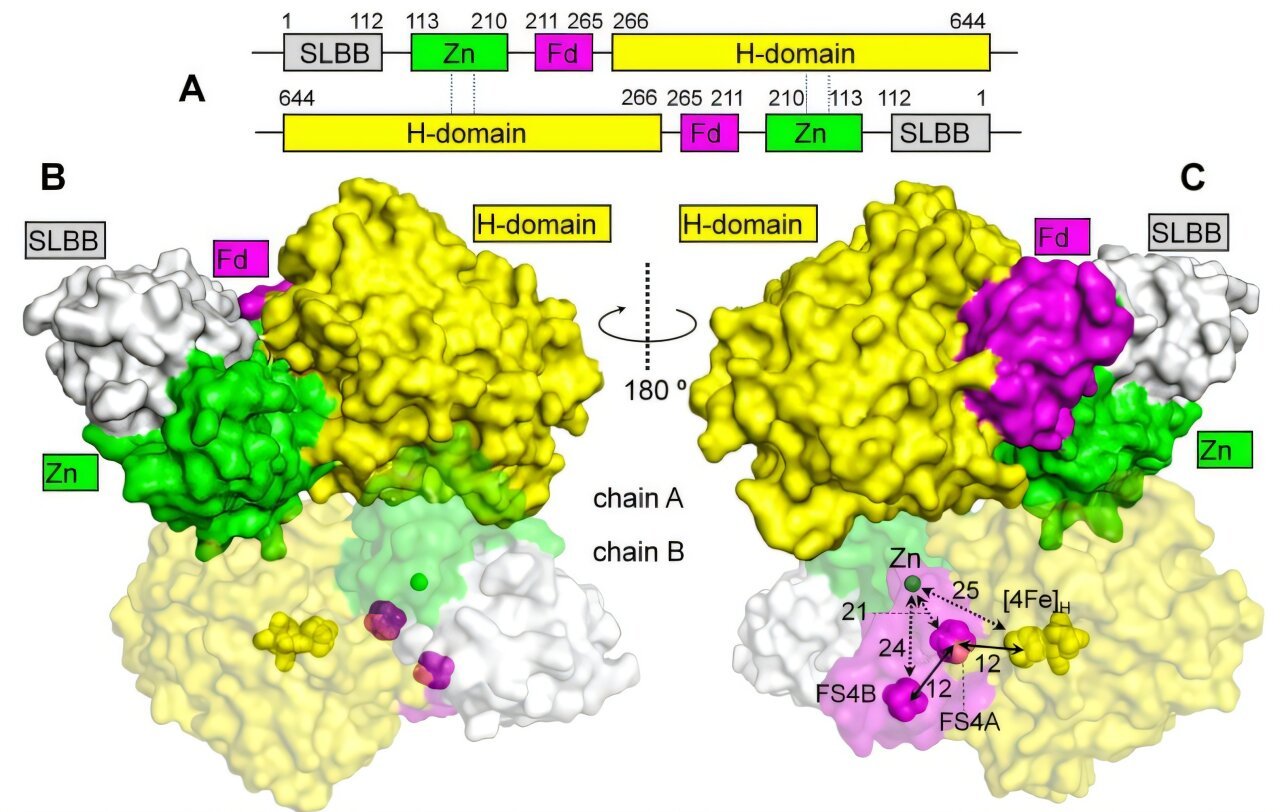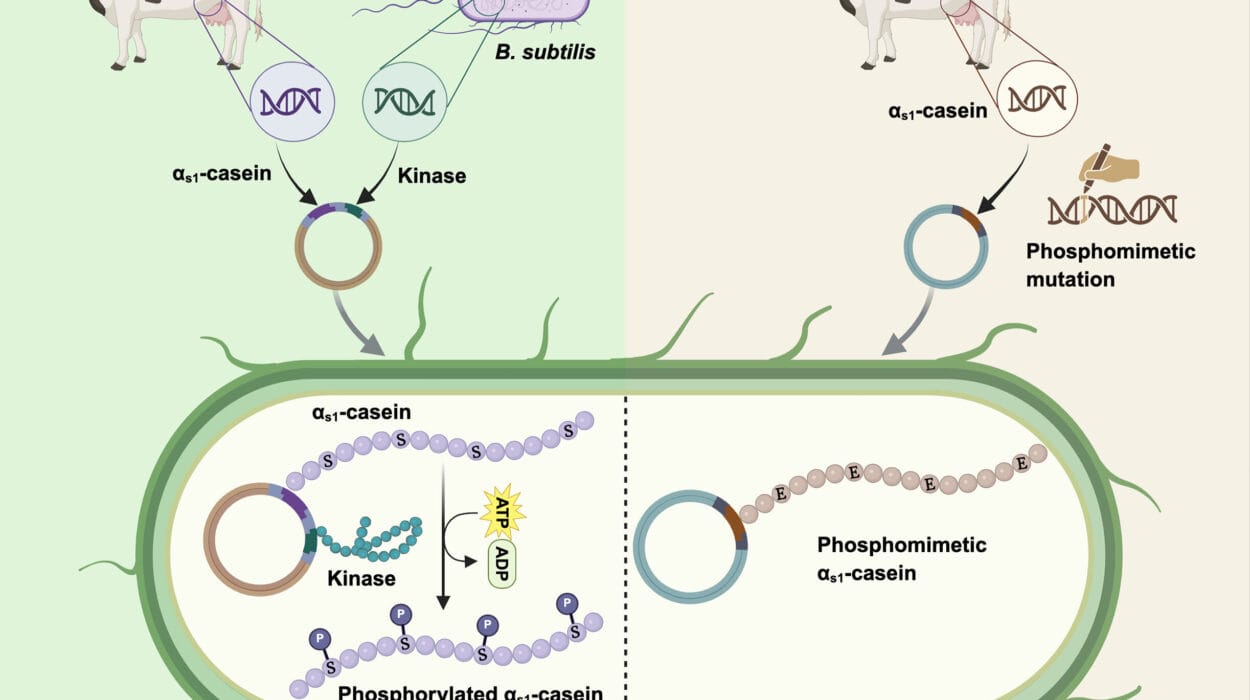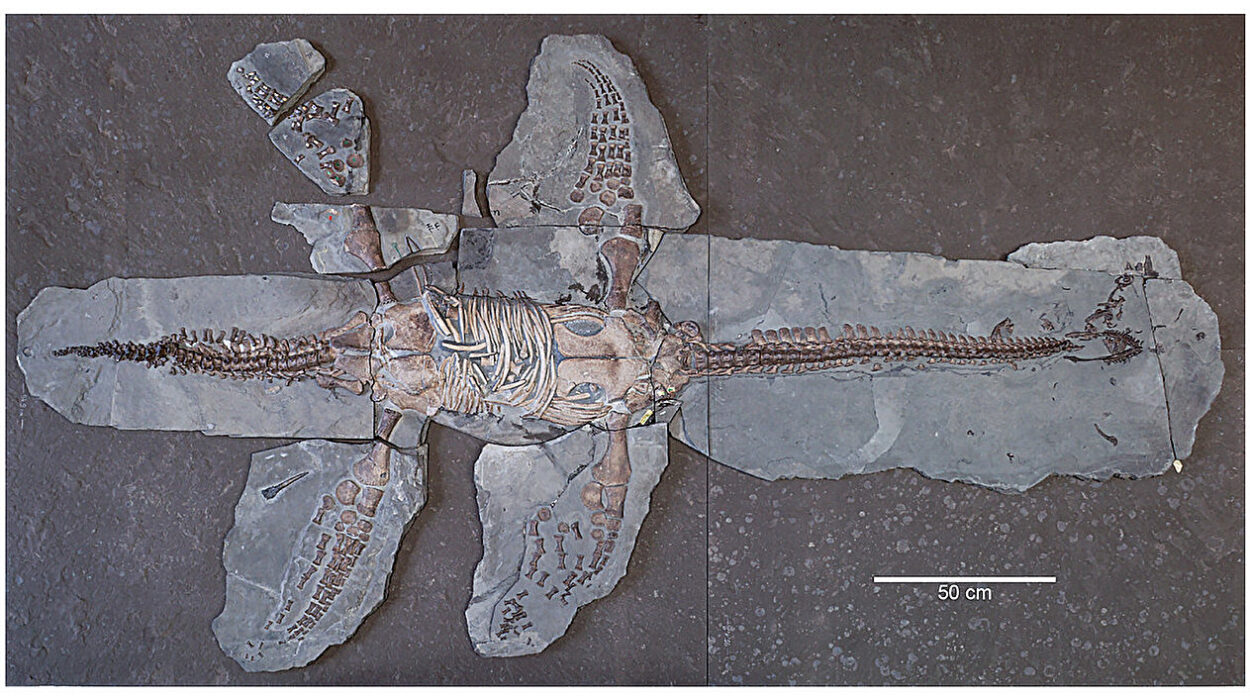Hydrogen gas (H₂) holds immense promise as a clean, renewable fuel source, with biological systems offering potential solutions for its efficient production. In particular, [FeFe]-hydrogenases are known to be the most efficient biocatalysts for hydrogen production, generating H₂ from protons and electrons with remarkable precision. However, these enzymes are vulnerable to a detrimental threat: oxygen (O₂). Most [FeFe]-hydrogenases, which rely on an iron-based active site to catalyze hydrogen production, are rendered inactive when exposed to oxygen, limiting their use in large-scale hydrogen production processes. Nonetheless, an exception to this rule has been identified in CbA5H, a specialized [FeFe]-hydrogenase derived from the bacterium Clostridium beijerinckii. This enzyme not only survives but thrives in the presence of oxygen, revealing a remarkable biological mechanism that has been the focus of cutting-edge research.
An international team of researchers, led by the Photobiotechnology Group at Ruhr University Bochum in Germany and the Protein Crystallography Group at Osaka University in Japan, set out to uncover the molecular details behind CbA5H’s unique ability to function in oxygen-rich environments. The study, published in Proceedings of the National Academy of Sciences (PNAS), delves deeply into the enzyme’s structure and activity, uncovering the strategies that allow CbA5H to evade oxygen-induced damage and contribute to the hydrogen production process.
The Enzyme: [FeFe]-Hydrogenase and Its Vulnerability to Oxygen
[FeFe]-hydrogenases are enzymes that catalyze the reversible transformation of protons and electrons into hydrogen gas (H₂), and their significance for clean energy production cannot be overstated. However, these enzymes contain active centers that consist of a metal-cluster structure built around iron and sulfur, which is highly sensitive to the presence of oxygen. The delicate arrangement of these metals in the enzyme’s active site can easily be destroyed when exposed to O₂, causing the enzyme to lose its ability to produce hydrogen.
Overcoming the enzyme’s vulnerability to oxygen has been a major challenge for biohydrogen research. While various strategies have been explored to stabilize [FeFe]-hydrogenases and enable their function in aerobic environments, no enzyme has shown a natural tolerance to oxygen as robust as CbA5H from Clostridium beijerinckii. This bacterium thrives in anaerobic conditions, where hydrogen is produced efficiently. CbA5H, however, offers a unique case where oxygen does not immediately destroy its hydrogen-producing capabilities.
The Collaborative Study: Unveiling the Mystery of CbA5H’s Oxygen Tolerance
To further investigate how CbA5H survives oxygen exposure, the Bochum and Osaka teams embarked on a collaborative study to analyze the structure and function of the enzyme in detail. The researchers first used cryo-electron microscopy (cryoEM) to determine the full structure of CbA5H, offering unprecedented clarity of how the enzyme behaves in the presence and absence of oxygen.
Previously, in 2019, partial data showed that CbA5H’s active site is protected by a nearby sulfur-containing group, which could shield the enzyme from oxidative damage when oxygen is present. However, these earlier findings only allowed for speculative hypotheses about the O₂-protection mechanism without providing direct insights into how the enzyme functions at the molecular level during hydrogen production.
By combining cryoEM with in-depth structural analysis, the team obtained a complete three-dimensional structure of the enzyme in anoxic conditions, which better reflect the enzyme’s functional state when actively producing hydrogen. This high-resolution data revealed key details about how the active site is maintained in its catalytically active state and how the sulfur-containing group plays a role in oxygen protection. The shielding sulfur group is detached in anoxic conditions, indicating that the active site is uncovered when the enzyme is in its hydrogen-producing state.
Comparing these structural changes between aerobic and anaerobic conditions led to important conclusions. As Jifu Duan, a member of the research team, explained, the ability of CbA5H to produce hydrogen despite being in an oxygenated environment stems from the protective molecular shielding during aerobic conditions, coupled with structural modifications in the absence of oxygen that allow optimal hydrogen production.
The Role of Dimerization in Stability: Zn²+ and CbA5H
One of the surprising discoveries made by the researchers was the critical role of Zn²+ ions in stabilizing the structure of CbA5H. The enzyme does not exist as a single isolated molecule; instead, it forms a dimer—two identical CbA5H molecules that come together to function optimally. This homodimeric structure is maintained through the interaction between a Zn²+-binding motif that joins the two molecules.
The homodimer plays a crucial role in enhancing the stability of CbA5H, as demonstrated by the researchers. When the Zn²+ ion was removed from the enzyme using a genetic modification, the dimeric form was destabilized, and the enzyme became much more prone to degradation. This finding highlighted the importance of zinc-mediated dimerization for preserving CbA5H’s functionality and its ability to withstand environmental stresses, including oxygen exposure.
The enhanced stability of the dimeric form offers insights into how CbA5H can maintain its activity over longer periods, even in challenging conditions. Furthermore, this information will be instrumental in discovering new [FeFe]-hydrogenases that exhibit similar O₂-resilience.
Conclusion: Insights and Applications
The findings from this study provide a wealth of knowledge regarding the structural and functional mechanisms that allow CbA5H to survive in the presence of oxygen while catalyzing efficient hydrogen production. Key discoveries include:
- The molecular shield provided by a sulfur-containing group, which helps protect the enzyme’s active site from oxygen-induced damage during aerobic conditions.
- The transition between an O₂-protected state and an active hydrogen-producing state, revealed through cryoEM.
- The role of Zn²+-mediated dimerization in stabilizing CbA5H and enabling it to retain activity under stress.
These insights not only help explain the unique capabilities of CbA5H but also set the stage for the engineering of new O₂-resistant [FeFe]-hydrogenases that could have far-reaching implications for large-scale hydrogen production. Understanding how this enzyme survives oxygen exposure while remaining effective in hydrogen production could eventually lead to more efficient biocatalysts for clean energy applications.
As Professor Thomas Happe of Ruhr University Bochum concludes, this study enhances our comprehension of the enzyme’s O₂-protection strategy, its mechanism of action, and the structural importance of dimerization. Armed with this knowledge, researchers are now better equipped to explore and develop new biohydrogenases that will make the production of hydrogen fuel more sustainable and economically viable.
Through the work of these international scientists, the quest to develop cleaner energy sources continues, and CbA5H stands as a symbol of the kind of biochemical innovation that could transform the future of hydrogen energy production.
Reference: Jifu Duan et al, Structural determinants of oxygen resistance and Zn2+-mediated stability of the [FeFe]-hydrogenase from Clostridium beijerinckii, Proceedings of the National Academy of Sciences (2025). DOI: 10.1073/pnas.2416233122






